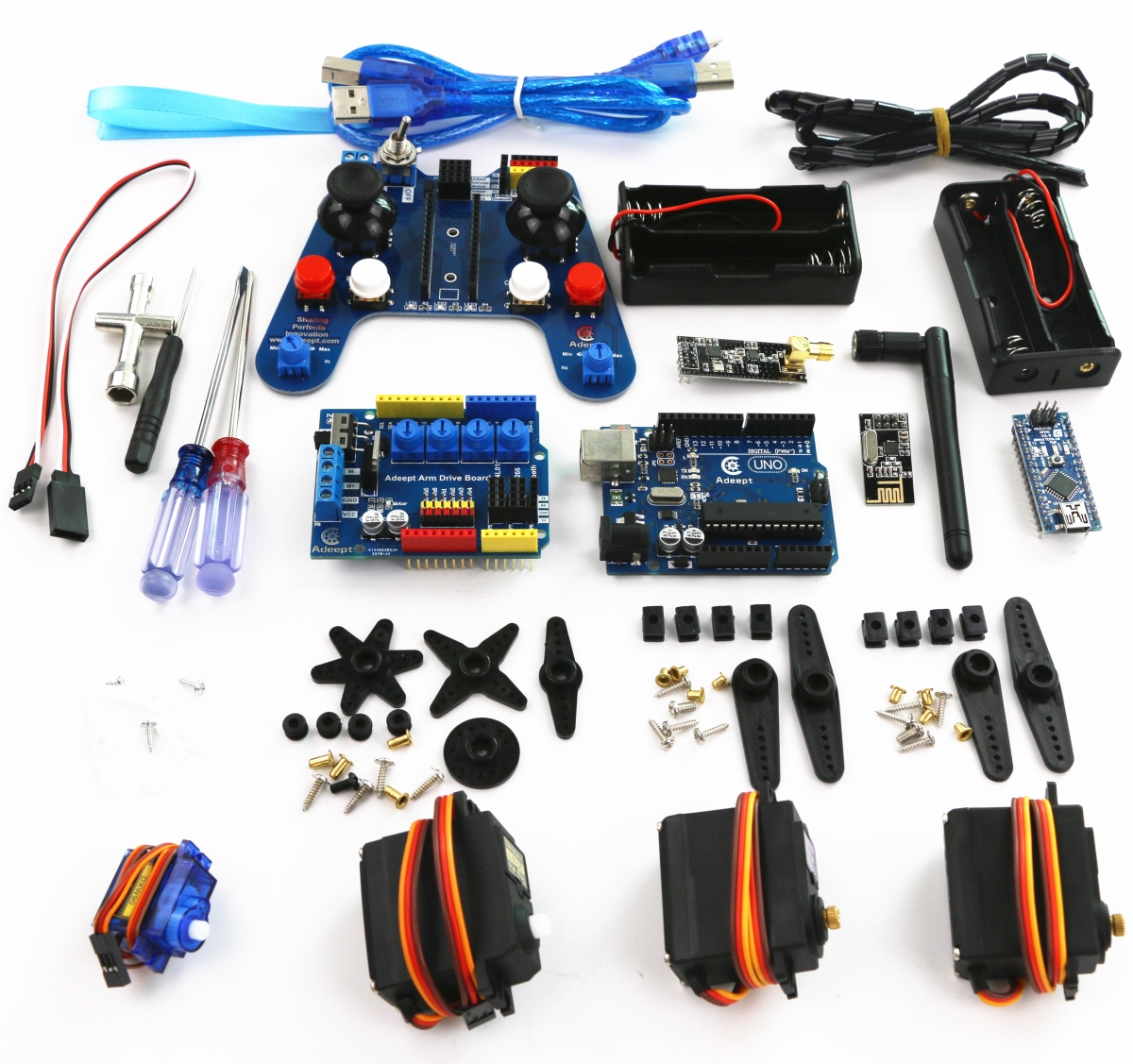
- #Arduino robot arm kit install
- #Arduino robot arm kit serial
- #Arduino robot arm kit drivers
- #Arduino robot arm kit Bluetooth
Now, you will be able to use your board over Bluetooth. Once you find your board, connect it and go back to PictoBlox software.
#Arduino robot arm kit Bluetooth
#Arduino robot arm kit serial

Alternatively, you can also go to settings, search Linux USB preferences, and enable the serial connection. You will get a notification to connect that device to Linux.First, connect quarky (or any supported board) through the serial port.To access the serial port follow these steps:.STEP 4: Access the serial port on Chromebook
#Arduino robot arm kit install
If the installation fails due to some reason, please open the Linux terminal and type this command : sudo apt – -fix-broken install and continue the installation.You can just double-click on the deb file, which will ask you to install this package using Linux.Please click on Install with Linux option and your installation will start.Open the Linux terminal from applications and run the command: sudo dpkg -i Package Name(eg: sudo dpkg -i PictoBlox_6.0.1_amd64_b).Copy the downloaded (.deb) file from Downloads folder to Linux files folder.You can now install PictoBlox using any of the following methods. Upon doing the above steps successfully, Linux environment will be installed in your system and Linux files folder will be created in your My files with your allocated space.This will ensure you’re always installing the latest versions of tools in its repository. Run this command in your terminal : sudo apt update.You can run Linux commands, install more tools using the APT package manager, and customize your shell. You have a Debian 10 (Buster) environment. Next to “Linux Development Environment,” select Turn On.Select Settings -> Advanced -> Developers.On your Chromebook, at the bottom right, select the time.You can turn it on at any time from Settings. If your budget is thousands, you can build something really cool like the AR2 robot arm.STEP 2: Turn On Linux Environment on Chromebook. It all depends on how strong and accurate of a robot arm you want to build. Some use geared steppers, others use belt drive or external gears to multiply their torque. Take a look at the fancier robot arms, and they all use stepper motors instead of servos. Mine are set up for 89 microsteps per degree of movement. With microstepping you can easily control their movement to 1/10 of a degree. Nema 17 size steppers with a 10:1 gearbox are around $50 each.
#Arduino robot arm kit drivers
You can get a ramps 1.4 board for an Arduino along with some A4988 stepper drivers for around $30.00. You don't have to spend a lot of money for them either. Stepper motors with some sort of gearing, like 10:1 geared are strong and very precise and repeatable when microstepped. Hobby servos aren't as precise as stepper motors, or as repeatable.


PCA9685 is the board that I am using for servo control by I2C. In my case, as space is at a premium, I am using a Servo City servo block for a base. Some sort of bearing stabilized base is critical, as there is a lot of stress on the servo shaft on the base. It's fairly strong with the right servos. The simplest solution is an I2C servo control board that you control with your Arduino.Īlthough they don't look pretty, I have had good luck with this style of robot arm. All servos will buzz when under load, but Arduino controlled servos often shake due to some fault in the way Arduino generates servo control pulses. They make it simple to have a separate power supply for the servos, and because the board itself generates the servo control pulses, you won't get any of the jitter that you often get from Arduino generated servo control signals. They can be bought from China for around $5.00. If your robot arm is going to be based on servos, and not stepper motors, I would suggest buying an inexpensive I2C servo control board.


 0 kommentar(er)
0 kommentar(er)
